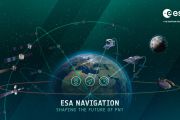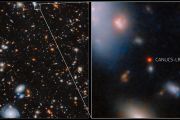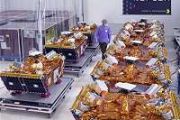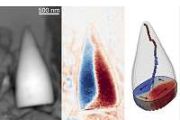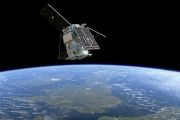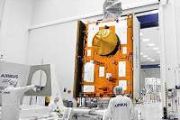
Copernical Team
Elusive planets play "hide and seek" with CHEOPS
 ESA's exoplanet mission Cheops confirmed the existence of four warm exoplanets orbiting four stars in our Milky Way. These exoplanets have sizes between Earth and Neptune and orbit their stars closer than Mercury our Sun.
These so-called mini-Neptunes are unlike any planet in our Solar System and provide a 'missing link' between Earth-like and Neptune-like planets that is not yet understoo
ESA's exoplanet mission Cheops confirmed the existence of four warm exoplanets orbiting four stars in our Milky Way. These exoplanets have sizes between Earth and Neptune and orbit their stars closer than Mercury our Sun.
These so-called mini-Neptunes are unlike any planet in our Solar System and provide a 'missing link' between Earth-like and Neptune-like planets that is not yet understoo Existence of massive first-generation stars with 260 solar masses confirmed
 A new study led by Chinese scientists has confirmed the existence of first-generation stars with 260 solar masses for the first time by finding evidence of the existence of pair-instability supernovae (PISNe) which evolved from such massive first stars in the early universe.
Previously, studies had only confirmed the existence of first-generation stars of under 100 solar masses, and thus t
A new study led by Chinese scientists has confirmed the existence of first-generation stars with 260 solar masses for the first time by finding evidence of the existence of pair-instability supernovae (PISNe) which evolved from such massive first stars in the early universe.
Previously, studies had only confirmed the existence of first-generation stars of under 100 solar masses, and thus t CALET captures charge-sign dependent cosmic ray modulation
 The movement of cosmic ray particles across space, such as electrons and protons, is influenced by the Sun's magnetic field, causing fluctuations in the intensity of galactic cosmic rays (GCRs) reaching Earth in response to the solar cycle. During periods of low solar activity, such as the solar minimum, more GCRs have been observed to reach Earth compared to that for periods of high solar activ
The movement of cosmic ray particles across space, such as electrons and protons, is influenced by the Sun's magnetic field, causing fluctuations in the intensity of galactic cosmic rays (GCRs) reaching Earth in response to the solar cycle. During periods of low solar activity, such as the solar minimum, more GCRs have been observed to reach Earth compared to that for periods of high solar activ HawkEye 360's Cluster 7 begins operation in record time
 HawkEye 360 Inc., the world's leading defense technology company for space-based radio frequency (RF) data and analytics, reports that its Cluster 7 satellites have begun operation. This latest satellite trio achieved initial operating capability in record time after successfully launching into orbit on April 15, 2023.
A new 300MHz whip antenna provides better coverage in the 270MHz - 330M
HawkEye 360 Inc., the world's leading defense technology company for space-based radio frequency (RF) data and analytics, reports that its Cluster 7 satellites have begun operation. This latest satellite trio achieved initial operating capability in record time after successfully launching into orbit on April 15, 2023.
A new 300MHz whip antenna provides better coverage in the 270MHz - 330M LEO PNT satellite signal simulator debuts at JNC 2023 conference
 Spirent will demonstrate the first fully-certified Xona satellite constellation simulator, SimXona, at the 2023 Joint Navigation Conference (JNC), June 12-15, 2023, in San Diego, CA. Organized by the Institute of Navigation, JNC is the largest U.S. military positioning, navigation, and timing (PNT) conference, with government, defense, and industry participation.
Spirent, the leading globa
Spirent will demonstrate the first fully-certified Xona satellite constellation simulator, SimXona, at the 2023 Joint Navigation Conference (JNC), June 12-15, 2023, in San Diego, CA. Organized by the Institute of Navigation, JNC is the largest U.S. military positioning, navigation, and timing (PNT) conference, with government, defense, and industry participation.
Spirent, the leading globa CNES, E-Space complete next-generation low earth orbit constellation study
 E-Space has completed a five-month feasibility study, commissioned by the French Space Agency, Centre National D'Etudes Spatiales (CNES). The study aimed at assessing and validating the technical capabilities of the E-Space satellite system (space platform, communication payload, guidance, navigation and control (GNC) and user terminal) as well as the long-term viability of the Company's underly
E-Space has completed a five-month feasibility study, commissioned by the French Space Agency, Centre National D'Etudes Spatiales (CNES). The study aimed at assessing and validating the technical capabilities of the E-Space satellite system (space platform, communication payload, guidance, navigation and control (GNC) and user terminal) as well as the long-term viability of the Company's underly Capella Space awarded multi-year blanket purchase agreement by NASA
 Capella Space, an American space tech company and the world's leading provider of commercial Synthetic Aperture Radar (SAR) imagery for a wide range of government, commercial and scientific applications, has been awarded a five year blanket purchase agreement (BPA) by NASA's Earth Science Division for the purchase of its high resolution SAR imagery and data for evaluation to determine their suit
Capella Space, an American space tech company and the world's leading provider of commercial Synthetic Aperture Radar (SAR) imagery for a wide range of government, commercial and scientific applications, has been awarded a five year blanket purchase agreement (BPA) by NASA's Earth Science Division for the purchase of its high resolution SAR imagery and data for evaluation to determine their suit Long missions, frequent travel take a toll on astronauts' brains, study shows
 As we enter a new era in space travel, a study looking at how the human brain reacts to traveling outside Earth's gravity suggests frequent flyers should wait three years after longer missions to allow the physiological changes in their brains to reset.
Researchers studied brain scans of 30 astronauts from before and after space travel. Their findings, reported in Scientific Reports, revea
As we enter a new era in space travel, a study looking at how the human brain reacts to traveling outside Earth's gravity suggests frequent flyers should wait three years after longer missions to allow the physiological changes in their brains to reset.
Researchers studied brain scans of 30 astronauts from before and after space travel. Their findings, reported in Scientific Reports, revea Chief designer details how future lunar landing works
 China is working on a rocket for its moon landing mission, which will send a manned spaceship and a lander to lunar orbit in two separate flights, chief designer of the country's manned space program Zhou Jianping revealed.
The spaceship will send the taikonauts to lunar orbit and dock with the lunar lander. The lander will subsequently carry the taikonauts to the moon's surface. After the
China is working on a rocket for its moon landing mission, which will send a manned spaceship and a lander to lunar orbit in two separate flights, chief designer of the country's manned space program Zhou Jianping revealed.
The spaceship will send the taikonauts to lunar orbit and dock with the lunar lander. The lander will subsequently carry the taikonauts to the moon's surface. After the How and why NASA gives a name to every spot it studies on Mars
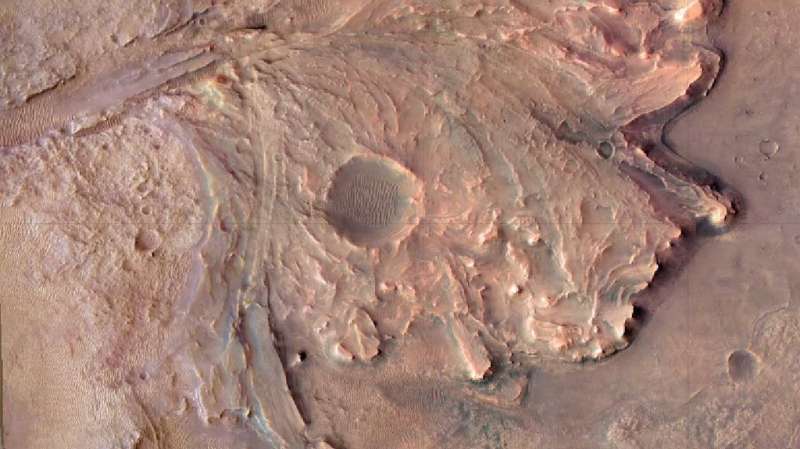
Martian maps are full of monikers recognizing places on Earth, explorers, and even cartoon characters.
NASA's Perseverance rover is currently investigating rock outcrops alongside the rim of Mars's Belva Crater. Some 2,300 miles (3,700 kilometers) away, NASA's Curiosity rover recently drilled a sample at a location called "Ubajara." The crater bears an official name; the drill location is identified by a nickname, hence the quotation marks.
Both names are among thousands applied by NASA missions not just to craters and hills, but also to every boulder, pebble, and rock surface they study.




